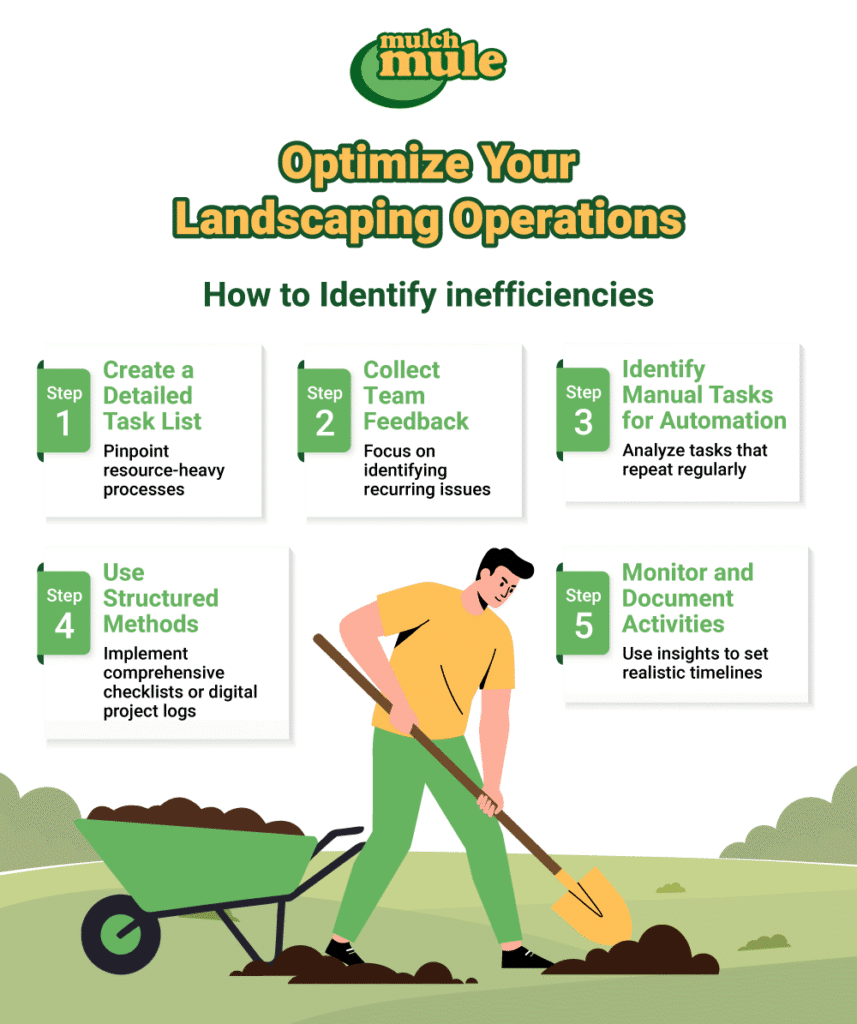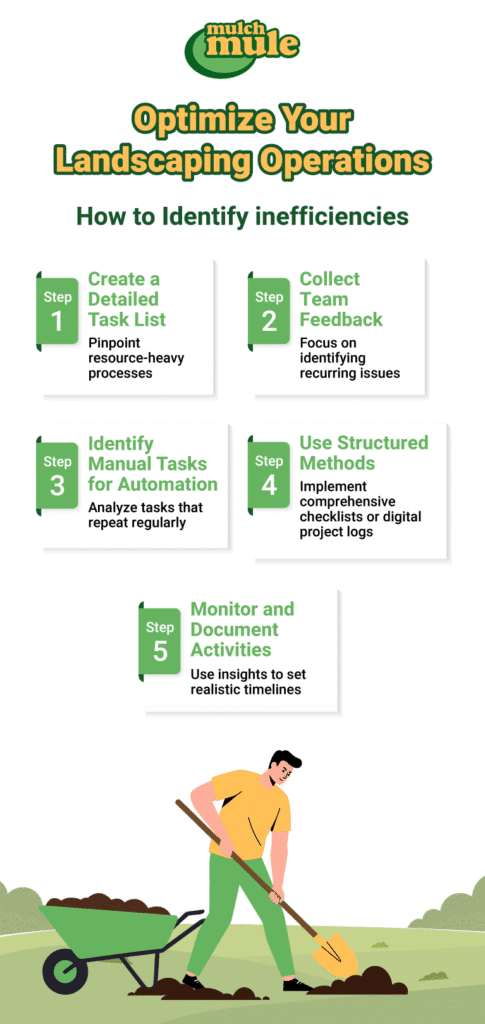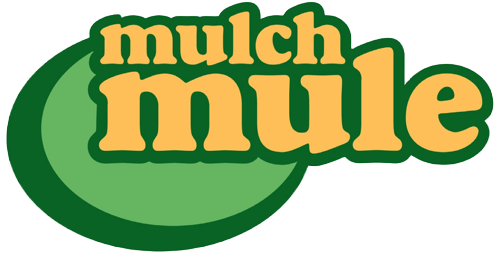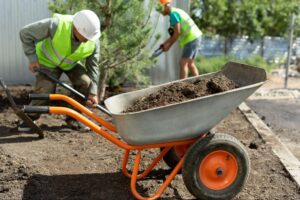In today’s competitive landscaping industry, achieving fast project turnarounds while maintaining quality and safety is essential. Many business owners are searching for efficient landscaping solutions that lower labor costs, boost productivity, and improve team well-being. Research on smart, automated solutions suggests that the right technology can significantly streamline operations, ensuring your business stands out throughout the year.
Landscaping managers and contractors often face rising labor costs, variable working conditions, and high client expectations. By integrating targeted process improvements with the right equipment, you can overcome these challenges and secure a firm foothold in the market. Below are ten actionable strategies to help you optimize your workflow, cut costs, and improve profitability—without sacrificing safety or quality.
1. Assess Your Current Operations
Begin by thoroughly evaluating your existing workflows, from the initial client call to project completion. Identify inefficiencies or delays by:


- Creating a detailed task list to pinpoint resource-heavy processes.
- Seeking direct feedback from your team on recurring issues.
- Noting all manual tasks that could benefit from automation.
Using structured methods—like a comprehensive checklist or digital project logs—provides a clear view of inefficiencies. For example, tracking material handling times may reveal bottlenecks that can be eliminated by better scheduling or improved equipment. You might discover that a simple change, such as reorganizing your crew based on specialized roles, leads to faster turnaround times and enhanced client satisfaction.
Monitoring and documenting project activities also produces valuable data for future planning. Insights gathered can help teams set realistic timelines while ensuring consistent communication with clients, ultimately boosting your company’s reputation for reliability.
2. Invest in Scalable Equipment
As your business grows, you’ll require machinery that not only handles larger workloads but also promotes year-round landscaping. Modern landscaping equipment can dramatically reduce labor hours and speed up project timelines. Well-chosen machinery is an investment in your business’s future, particularly when it reduces manual tasks and lowers the risk of injuries.
One example is the Mulch Mule Trailer, which automates heavy lifting and accelerates material distribution. Equipped with a 15 cubic yard aluminum hopper, the Mulch Mule Trailer can discharge its entire load in 45 seconds. Its attachments and upgrades allow you to adapt quickly to seasonal demands.
When selecting landscaping equipment, focus on:
- Durability, quality, and ease of maintenance.
- Multifunctional design to address a variety of needs, whether bulk material transport or specialized tasks.
- Upgrades that can minimize downtime and improve workflow efficiency.
High-quality gear doesn’t just increase speed; it also helps safeguard employees from potential strain-related injuries.
When you compare the upfront costs of specialized equipment to its potential labor and time savings, the long-term benefits become clear. Such investments also enhance safety by reducing manual lifting, aligning with established safety protocols.
Designed to transport and distribute soil, mulch, leaves, debris, stone and aggregate to save you time and money. Many satisfied customers have seen measurable results with Mulch Mule.
Watch the video below for a walkaround of this invaluable equipment.
3. Reduce Labor Costs Without Sacrificing Quality
Growing labor expenses can be daunting. Instead of cutting staff, consider optimizing roles through automation. When automated trailers or loaders handle demanding tasks like transporting heavy materials, your crew can focus on higher-value services such as landscape design or customer service. This shift not only reduces physical strain but also helps minimize the risk of work-related injuries by lessening the need for heavy manual lifting.
Allowing machines to handle loading and unloading increases overall throughput. Reallocating your team to work on client-facing tasks can result in higher customer satisfaction and repeat business. Such automation supports a work environment where physical demands are more balanced, allowing employees to perform at their best.
4. Enhance Safety and Team Morale
Prioritizing safety can significantly increase both productivity and morale. Advanced technical features—like a live floor system for faster unloading or a remote-control function that reduces manual interventions—keep workers safer. This approach resonates with the goals of many industry organizations, including the National Association of Landscape Professionals, which emphasizes the importance of modern tools and ongoing safety training.
By investing in equipment where ergonomic design meets powerful functionality, you signal that your employees’ health is just as important as your bottom line. Regular training on operation protocols, safety checks, and hazard mitigation boosts team confidence, helping staff work at peak performance. In turn, higher morale can yield better customer interactions, higher retention rates, and stronger overall business performance.
5. Accelerate Project Timelines
Time is a critical resource in landscaping. Projects that drag on too long not only frustrate clients but also limit your capacity to take on new work. With automated trailers like the Mulch Mule Trailer, loading and unloading of multiple materials—mulch, aggregates, and soil—happens quickly and precisely, significantly reducing on-site hours.
Speed is not the only benefit. Large trucks or trailers with advanced discharge mechanisms can help you schedule simple runs to pick up or drop off materials, then rapidly move on to the next step in the process. For instance, you might split a large landscaping project into smaller stages, completing the transport phase quickly with automated equipment before focusing on the aesthetic details. By shortening each of these phases, you deliver results faster, bolstering your professional reputation for efficiency.
Using project management software can further enhance scheduling and resource allocation, allowing you to handle potential delays in real time. By syncing equipment usage with staff availability, you’ll finish tasks sooner and free up resources for additional contracts. Completing jobs ahead of schedule improves your reputation and fosters loyalty from clients who appreciate prompt, reliable service.
6. Boost Productivity with Strategic Resource Management

Look for ways to align human expertise and technological capabilities across every stage of the project. Automated systems free up staff for tasks that require creativity and specialized knowledge, resulting in higher-quality outcomes. Real-time monitoring tools can indicate when your team or equipment is inactive, allowing you to restructure tasks to reduce downtime.
Implementing a phased approach—where staff specialize in different aspects of the project—can also yield significant gains. Some team members focus on initial land preparation, while others handle design details, planting, and final touches. Integrating advanced sensors or automated diagnostics into your trailers and attachments helps preempt equipment failures, cutting unplanned downtime and maintenance costs.
Additionally, many modern business intelligence platforms offer data-driven insights into operational timetables, enabling you to optimize both labor and machinery. By refining your resource management, you’ll drive consistent improvements in timeliness, safety, and cost control.
Implementing smarter strategies can significantly lower operational costs while boosting profitability:
- Task Allocation: Assign tasks based on individual skills. For example, a crew member experienced with specialized machinery should focus on that operation.
- Cross-Training: Equip employees with versatile skill sets so that work continues seamlessly if someone is out or when shifting priorities mid-project.
- Automation and Ergonomics: Simple adjustments—like maintaining correct tire pressure on wheelbarrows or adopting automated trailer unloaders—not only improve efficiency but also contribute to a safer work environment.
Companies that effectively manage labor can typically handle more projects simultaneously, strengthening cash flow and enabling reinvestment into the business. Complement these strategies with targeted training programs to further increase productivity while reducing overall labor costs.
7. Maximize Year-Round Growth
Landscaping isn’t just a spring-and-summer operation. Adapting your resources to provide leaf clearing in autumn or basic off-season tasks in winter ensures an even revenue stream throughout the year. The Mulch Mule Trailer is primarily designed for handling mulch and leaves and can serve as an effective component of your year-round landscaping toolkit when combined with complementary equipment and attachments.
Beyond traditional lawn care, expanding into areas like winter protection services, holiday decor, or irrigation maintenance can further stabilize revenue and keep your crew employed. Promoting the multi-seasonal capabilities of your business—whether through on-site demos or targeted marketing—gives customers a reason to rely on you regardless of the month or weather conditions. These targeted marketing efforts to attract diverse clientele and keep your pipeline full, even during traditionally slower periods.
8. Train and Empower Your Team
High-end gear alone won’t guarantee success. Even the most sophisticated equipment demands an experienced and well-trained crew. Through hands-on demonstrations, workshop sessions, and refresher courses, you can ensure your workforce is confident and adept at operating advanced machinery.
Promote a culture of continuous improvement by encouraging employees to share ideas on workflow enhancements. Mentoring programs where seasoned workers coach newcomers also accelerate learning. When employees see their feedback leads to real change—such as adopting better sanding techniques or scheduling improved shift rotations—overall morale improves. Good training is especially crucial for preventing common errors that could lead to costly repairs or safety incidents down the line.
9. Optimize Your Business with Smart Financing, Technology, and Sustainable Practices
Investing in high-quality landscaping equipment, such as the Mulch Mule, can involve a significant upfront cost. Fortunately, providers and dealers often offer flexible financing to help manage initial expenses. Outside of financing, look for warranties and after-sales support so you’re never left without dependable assistance.
Sustainability also plays a growing role in gaining client trust. Using tools that reduce emissions, minimize fuel use, or curtail waste resonates with environmentally conscious customers. Landscaping technology such as remote diagnostics or scheduling systems reduces overhead, enabling you to run a leaner, more profitable operation. Implementing eco-friendly measures not only helps the planet but frequently leads to long-term savings on utilities and materials.
When combined, intelligent financing plans, digital management tools, and sustainable approaches allow landscaping companies to scale effectively while maintaining a firm commitment to safety, productivity, and quality.
10. Monitor and Optimize Costs for Long-Term Profitability
Achieving lasting profitability requires meticulous attention to costs such as labor, fuel, materials, and maintenance. Track these in real time to quickly identify and address any upward trends before they impact your bottom line. Software that integrates time tracking, project management, and inventory control can provide a comprehensive view of your operations, enabling timely and effective cost adjustments.
Regular audits and reviews of your operational expenses can help pinpoint inefficiencies. Optimizing routes, updating equipment proactively, and investing in training are practical ways to ensure that cost savings translate into sustainable profitability.
Take your Landscaping Productivity to the Next Level

Transforming your business with efficient landscaping solutions involves a balanced approach: thoroughly assessing workflows, investing in adaptable equipment such as the Mulch Mule Trailer, and continuously training your staff. By reducing manual labor, cutting project times, and fostering a safety-first culture, you create an environment where profitability and team morale grow together.
Each of the tips above offers a practical blueprint for elevating your operation—streamlining tasks, preventing common errors, and consistently exceeding client expectations. If you want to learn more about how the Mulch Mule can enhance productivity and safety, connect with our team to schedule a live Mulch Mule demo and discover how modern, automated equipment can power your landscaping business to greater success.



